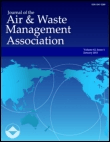
JOURNAL OF THE AIR & WASTE MANAGEMENT ASSOCIATION
Scope & Guideline
Exploring the Intersection of Science and Environmental Policy
Introduction
Aims and Scopes
- Air Quality Assessment and Management:
Research focusing on the evaluation, modeling, and management of air quality, including the impacts of pollutants on human health and ecosystems. - Waste Management and Recycling:
Studies on the management, treatment, and recycling of municipal solid waste, industrial waste, and hazardous materials, including innovative technologies and practices. - Environmental Justice and Public Health:
Investigations into the intersection of environmental issues and public health, particularly regarding vulnerable populations and the implications of environmental policies. - Climate Change and Sustainability:
Research addressing the implications of climate change on air quality and waste management, including mitigation strategies and sustainable practices. - Innovative Environmental Technologies:
Development and evaluation of new technologies for pollution control, waste treatment, and resource recovery, emphasizing practical applications and effectiveness.
Trending and Emerging
- Data-Driven Environmental Monitoring:
The use of advanced monitoring techniques, including mobile laboratories and low-cost sensors, is on the rise, emphasizing real-time data collection and analysis for better decision-making. - Circular Economy Approaches:
Research focusing on circular economy principles within waste management, including resource recovery and sustainable practices, is trending as industries seek more sustainable operations. - Impact of Climate Change on Air Quality:
Studies exploring the relationship between climate change and air quality dynamics are increasingly prominent, reflecting the urgent need to address interconnected environmental challenges. - Environmental Justice Frameworks:
There is a notable increase in research addressing environmental justice, focusing on the disproportionate impacts of pollution on marginalized communities and advocating for equitable solutions. - Innovative Waste Treatment Technologies:
Emerging technologies for waste treatment, including bioremediation and advanced recycling methods, are gaining traction as researchers explore their effectiveness and implementation.
Declining or Waning
- Traditional Pollution Control Methods:
Research that relies on conventional pollution control technologies is becoming less prominent as newer, more innovative solutions gain traction in the field. - Generalized Environmental Assessments:
Studies that provide broad assessments without specific focus on particular pollutants or technologies are declining, as there is a growing preference for detailed, case-specific analyses. - Non-Urban Air Quality Studies:
Research centered on air quality in rural or non-urban settings has decreased, possibly due to a shift in focus towards urban pollution issues and their complex dynamics. - Static Waste Management Practices:
The exploration of static waste management practices without consideration of dynamic systems and circular economy principles is becoming less relevant in light of evolving sustainability frameworks.
Similar Journals
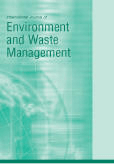
International Journal of Environment and Waste Management
Transforming Waste Management through KnowledgeThe International Journal of Environment and Waste Management, published by InderScience Enterprises Ltd, serves as a vital platform for researchers and professionals in the fields of Environmental Engineering and Waste Management. With an ISSN of 1478-9876 and an E-ISSN of 1478-9868, this journal encompasses a wide range of topics from innovative technologies in waste processing to sustainable environmental practices. Ranked in the Q3 category for Environmental Engineering and Q4 for Waste Management and Disposal in 2023, it holds significance in advancing knowledge and impacting practices in these essential domains. The journal accepts articles that contribute to the understanding and development of effective waste management strategies, ensuring alignment with contemporary environmental challenges. As it converges years from 2006 to 2024, it continues to attract contributions that reflect the latest research and methodologies. For scholars, students, and practitioners alike, this journal is an invaluable resource, enriching the dialogue around environmental sustainability and waste minimization.

Environment Protection Engineering
Exploring Engineering Frontiers in Environmental ProtectionEnvironment Protection Engineering is a peer-reviewed academic journal published by Technical University of Wroclaw, dedicated to advancing knowledge and research in the fields of environmental engineering and waste management. With a rich publishing history dating back to 1980, the journal encompasses a wide spectrum of topics, from innovative engineering solutions to the effective management of waste, promoting sustainable practices and environmental protection methodologies. Despite its recent classification in the Q4 quartile of both Environmental Engineering and Waste Management and Disposal, the journal serves as a critical platform for researchers, professionals, and students seeking to disseminate their findings and engage with current challenges faced in environmental science. Located in Poland, the journal supports the scholarly community by providing insightful articles that contribute to the discourse surrounding environmental sustainability. Though currently not available as an open-access publication, it remains an essential resource for those aspiring to deepen their understanding of pressing ecological issues and solutions.

Global NEST Journal
Nurturing collaboration for global ecological resilience.Global NEST Journal, published by the GLOBAL NETWORK ENVIRONMENTAL SCIENCE & TECHNOLOGY, stands as a vital resource for researchers and practitioners in the field of environmental science. With its established trajectory since 2001 and a current category quartile ranking of Q3 in Environmental Science (miscellaneous), this journal serves as an important platform for disseminating innovative research and insights that address pressing global environmental challenges. Based in Athens, Greece, the journal is accessible to a wide audience, facilitating collaboration and knowledge sharing across disciplines. Despite its open access status being unspecified, the Global NEST Journal aims to enrich the academic community by publishing original research articles, reviews, and case studies on various aspects of environmental science and technology. By fostering a deeper understanding of complex environmental issues, this journal not only enhances academic discourse but also contributes to practical solutions for a sustainable future.

JOURNAL OF ENVIRONMENTAL RADIOACTIVITY
Unveiling the impacts of radioactivity on our planet.JOURNAL OF ENVIRONMENTAL RADIOACTIVITY, published by Elsevier Science Ltd, is a prestigious peer-reviewed journal dedicated to the field of environmental science with a particular focus on the implications and management of radioactivity in the environment. Since its inception in 1984, the journal has served as a vital platform for researchers, scientists, and professionals to disseminate new findings that intersect with areas such as environmental chemistry, health, toxicology, pollution, and waste management. With a strong reputation reflected in its 2023 Q2 rankings across multiple categories and respectable Scopus rankings, it offers valuable insights and rigorous research that shape the discourse on environmental safety and public health. Although it does not operate under an open-access model, subscribers benefit from high-impact articles that push forward the boundaries of knowledge in the management and understanding of radioactive contaminants. This journal is essential for anyone involved in environmental research or policy-making who seeks to stay informed about the latest developments in this critical area of study.
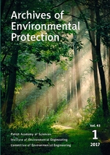
Archives of Environmental Protection
Exploring Solutions for Environmental ChallengesArchives of Environmental Protection, published by the Polish Academy of Sciences, is a pivotal journal in the field of Environmental Science. With an ISSN of 2083-4772 and E-ISSN of 2083-4810, this journal serves as a critical platform for disseminating innovative research and comprehensive reviews that address the complexities surrounding environmental issues. As of 2023, it holds a respectable Q3 ranking in Environmental Science, reflecting its relevance and contribution to the academic community, indicated by a Scopus rank of 124 out of 233 in the General Environmental Science category. Although it operates without Open Access, the journal's consistent publication from 2007 to 2024 emphasizes its commitment to advancing knowledge in diverse areas of environmental protection. Researchers, professionals, and students are encouraged to engage deeply with the wealth of insights offered through the rigorous peer-reviewed articles presented in this journal, which strive to foster sustainable practices and environmental stewardship.
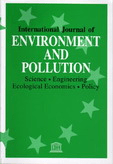
INTERNATIONAL JOURNAL OF ENVIRONMENT AND POLLUTION
Empowering Researchers to Tackle Global Environmental ConcernsInternational Journal of Environment and Pollution is a pivotal publication in the field of environmental science, dedicated to advancing knowledge concerning pollution and its multifaceted impacts on ecosystems and human health. Published by InderScience Enterprises Ltd, this journal, which has been in circulation since 1991, serves as a vital platform for researchers, professionals, and students interested in the management, monitoring, policy, and law associated with environmental issues. With an ISSN of 0957-4352 and E-ISSN 1741-5101, it offers a critical perspective on pollution challenges, emphasizing Waste Management and Disposal. Although placed in the Q4 quartile of its categories, it remains an important resource for understanding the complexities of environmental impact, contributing to policy formulation and ecological research. The journal does not offer Open Access, but it can be accessed through various academic libraries and institutions that value comprehensive studies in environmental management. Engage with the latest findings and discussions that address pressing environmental concerns today!

ACS Environmental Au
Advancing Environmental Solutions for a Sustainable FutureACS Environmental Au is a leading open-access journal published by the American Chemical Society (ACS), dedicated to advancing research in the environmental sciences. Since its inception in 2021, this journal has quickly established itself in the highly competitive landscape of environmental research, achieving Q1 status across multiple categories—Environmental Engineering, Environmental Science (Miscellaneous), and Water Science and Technology. With a strong Scopus ranking, including Rank #38 in Water Science and Technology representing the top 85th percentile, ACS Environmental Au serves as a vital platform for disseminating high-quality research and innovative solutions to pressing environmental challenges. It is particularly notable for its commitment to accessibility, providing researchers, professionals, and students with open access to critical findings that support sustainable development and environmental stewardship. This journal not only emphasizes rigorous scientific inquiry but also seeks to provoke thoughtful discourse and collaborative initiatives that address global environmental issues.
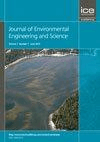
Journal of Environmental Engineering and Science
Exploring Innovative Solutions for a Sustainable FutureJournal of Environmental Engineering and Science, published by Emerald Group Publishing Ltd, is a prominent academic platform dedicated to the dissemination of cutting-edge research in the fields of environmental engineering, chemistry, and science. This journal, with ISSN 1496-2551 and E-ISSN 1496-256X, features a comprehensive collection of studies that delve into innovative methodologies and practical applications aimed at solving pressing environmental issues. Having been published since 2002, it spans critical research years from 2015 to 2024, offering insights that are invaluable to both academics and practitioners alike. With its current rankings placing it in the fourth quartile for Environmental Chemistry and Engineering, and the third quartile in miscellaneous Environmental Science, the journal serves as a significant yet under-utilized resource for emerging scholars seeking to contribute to the ecological discourse. Though it does not offer Open Access, the content is meticulously curated to uphold academic rigor, catering especially to researchers, professionals, and students keen on advancing their understanding of environmental challenges and engineering solutions.

Rocznik Ochrona Srodowiska
Fostering Interdisciplinary Dialogue in Environmental ResearchRocznik Ochrona Srodowiska, published by the Middle Pomeranian Scientific Society for Environmental Protection, is an esteemed journal dedicated to advancing the field of environmental science in Poland and beyond. With an ISSN of 1506-218X, this peer-reviewed journal has established itself as a vital resource since its inception in 2007, addressing various environmental issues and promoting sustainable practices. Currently holding a Q3 category ranking in the Environmental Science (miscellaneous) field for 2023, it places itself in the 23rd percentile of Scopus rankings, reflecting a growing influence in the broader environmental research community. While the journal is not open access, it serves as an important conduit for researchers, professionals, and students to disseminate their findings and contribute to the interdisciplinary dialogue aimed at tackling pressing environmental challenges. With a commitment to rigorous research and practical applications, Rocznik Ochrona Srodowiska remains an essential platform for fostering innovation and collaboration in environmental studies.

Pollution
Connecting researchers to tackle pressing environmental issues.Pollution is a distinguished open-access journal published by UNIV TEHRAN, dedicated to advancing the understanding of environmental science and the multifaceted aspects of pollution research. Since its establishment in 2015, the journal has been committed to disseminating high-quality, peer-reviewed articles that address the pressing issues of environmental degradation globally. With an impact factor and a Scopus rank that places it within the top tier of Environmental Science (Rank #141/233), Pollution serves as an essential resource for researchers, professionals, and students alike. The journal encompasses a wide range of topics, including the sources, effects, and mitigation strategies related to various forms of pollution, thereby aiming to contribute significantly to the scientific community's efforts in promoting environmental sustainability. Its innovative and timely approach positions Pollution as a vital platform for sharing knowledge and fostering interdisciplinary collaboration in the environmental science domain.